Big Fish in Small Ponds: How Top Athletes Can Still Flourish in States Not Known For Major Swimming Success
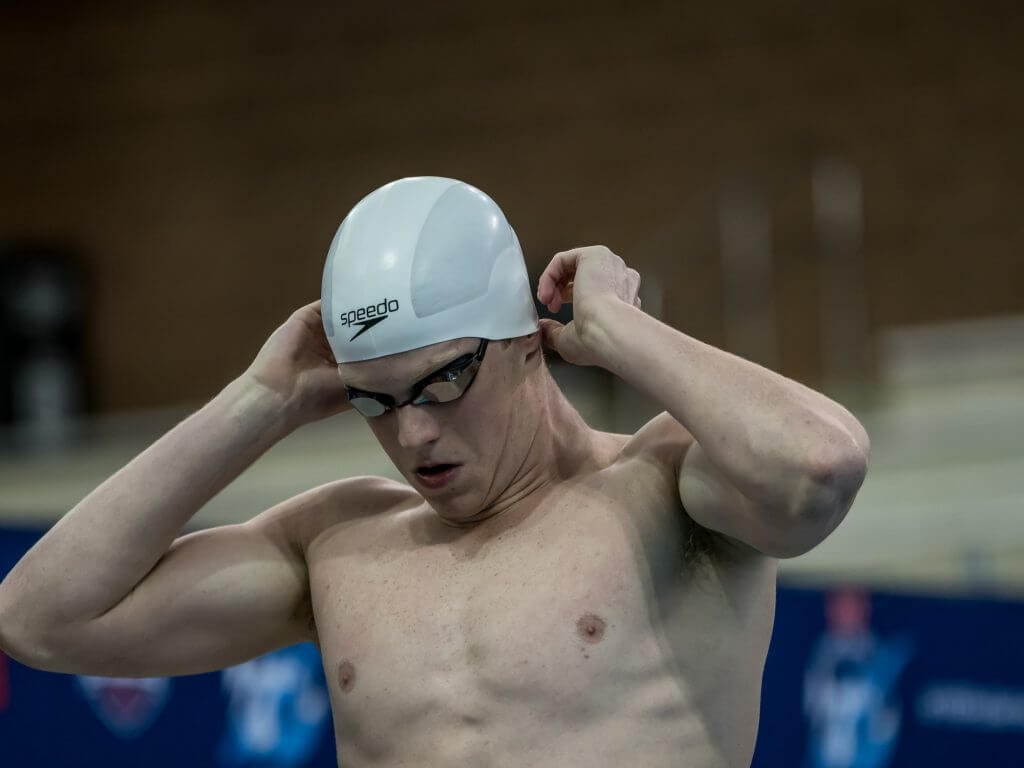
Big Fish in Small Ponds: How Top Athletes Can Still Flourish in States Not Known For Major Swimming Success
The United States has been dominant in the sport of swimming for decades. With great coaches at the club and college level spread through all 50 states and with more than 300,000 athletes, it is no wonder the United States churns out so many high caliber swimmers each and every year.
The college system helps with that as well. With the attainable goal of swimming beyond high school as a valued member of a team pursuing a common goal, it can draw people into the joys of team swimming. Oftentimes, the drive and determination to reach the collegiate level helps those late blooming swimmers make their way onto a college team, reaching their full potential in a supporting environment.
In states like California, Florida, Georgia, Indiana, North Carolina, Ohio and Virginia, there are ample opportunities for high school swimmers to attain in-state tuition at Division I, II & III schools, and oftentimes the best high school prospects each year come out of those states.
In looking at USA Swimming’s gold medal clubs in 2020, Nation’s Capital in Maryland and Virginia is the No. 1 ranked club, followed by Swim MAC in North Carolina, Dynamo in Georgia, NOVA in Virginia and the Mason Manta Rays in Ohio.
The success of these clubs is due, in part, to location. Previous success brings in swimmers from outside to train at a prestigious club. And swimming has long been a hotbed in those aforementioned areas of D.C., Charlotte, Atlanta and Cincinnati. While swimmers in those states and cities may have advantages over others, that doesn’t mean success can only come from those states.
Success in States With No Division I Program
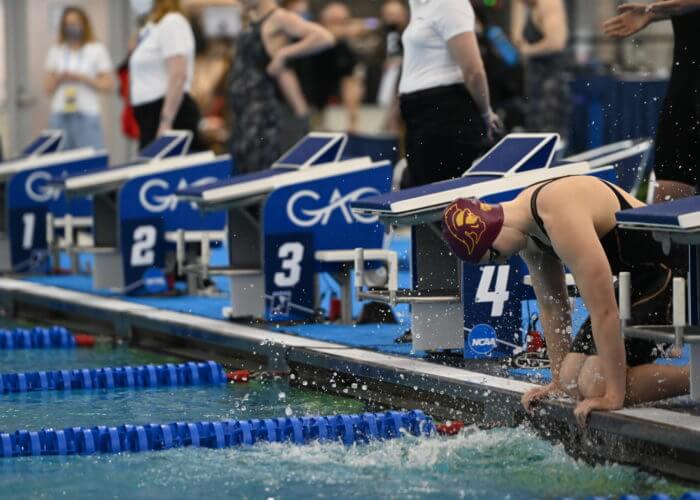
Kaitlyn Dobler. Photo Courtesy: NCAA Media
USC freshman Kaitlyn Dobler recalls being the first swimmer from Oregon to set a national record in 30 years in swimming in 2020, a feat that saw her receive a standing ovation at the Oregon High School State Championships.
“That was really an amazing moment,” Dobler said. “I knew pretty much everyone that was at that pool. It was really nice to see everyone appreciating that accomplishment. The announcer had been announcing since before I was born so it was a really great moment. It was such a tight knit community and I was proud to represent Oregon on the national level too.”
Michigan junior Patrick Callan remembers being the first swimmer from Oklahoma to make the National Junior Team in 2017.
“All my teammates were like, ‘holy crap!’ That is almost unheard of in Oklahoma to make it to any sort of national team. Obviously (David) Plummer did it which was a huge deal in the whole state when he made that (Olympic) team because he may have been the first. It was definitely not sort of an expectation to get to any sort of high level just because for most people, high school swimming is the top level of swimming in the entire state. So whenever someone does go super high D-I or makes the national team, it is a huge deal for the entire state and everybody rallies around that person and tries to help that person be as good as they can be.”
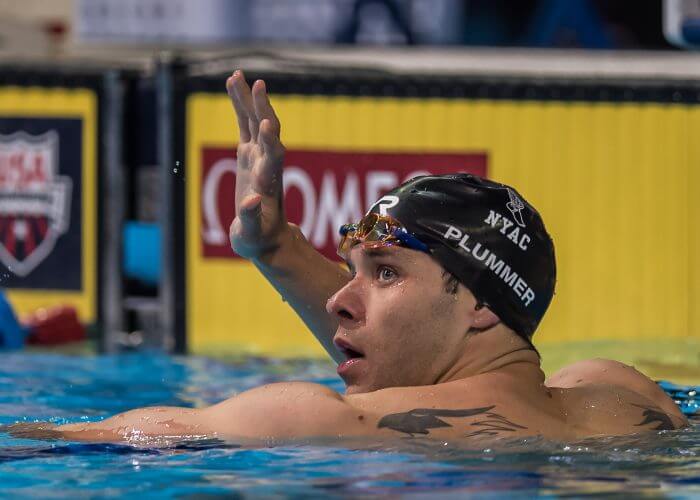
Oklahoma native and 2016 Olympian David Plummer. Photo Courtesy: Peter H. Bick
Texas commit Lydia Jacoby was the first swimmer from Alaska to win a junior national title, when she won the 100 breaststroke in 2019.
“Alaska swimming is such a tight-knit community so I have not only my club team and my coach but also all the state pretty much,” Jacoby said. “All the coaches and swimmers are really supportive. It’s really cool. I wasn’t expecting it at all. I swam Nationals and Juniors back to back and I had a 1:10 seed and went to a 1:09 at Nationals and then a 1:08-mid in finals, and at Juniors I dropped down to a 1:08 low. It was a big drop. I had been training hard so I was hoping and I thought I could do better but that was really unexpected and it was really cool how much support I got from Alaska swimming.”
How Swimming is Perceived and Appreciated
For these three specifically, reaching the national team was never a “must have” goal. For each of them, they were the first time their club team was exposed to the national level. With Alaska, Oklahoma and Oregon each having zero Division I in-state options for college swimming, elite swimming is not an expectation for those in high school, unlike it is in some states and at some gold, silver and bronze medal clubs.
“For me, a bunch of my friends did (swimming) when I was little and petered out in middle school,” Jacoby said. “There were several factors, definitely a lot of sports. Basketball is really popular.”
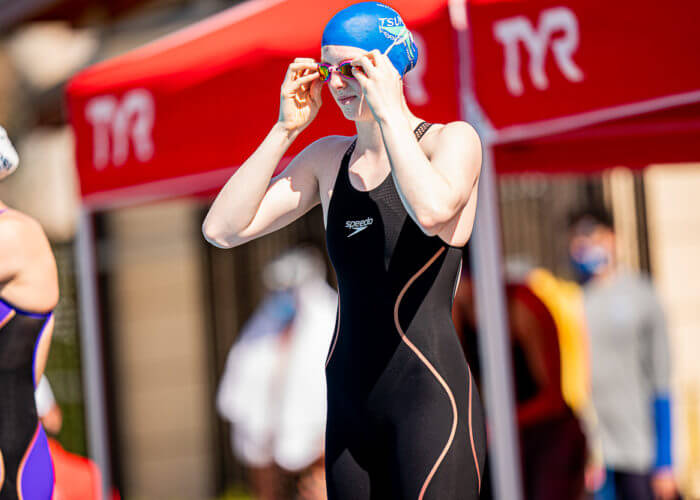
Lydia Jacoby. Photo Courtesy: Becca Wyant
“Mainly high school swimming is it for most people,” Callan said. “A lot of people I know would do cross country in the fall and then swimming in the winter or spring so most people didn’t just do swimming. Obviously, every once in a while there is somebody that goes off to college in Oklahoma but it is very rare, so for most people senior year high school state is the last meet and they move on. High school swimming is very low key.”
“I feel like most people that make it to senior year swimming will likely go to an out of state school to swim,” Dobler said. “There’s some people that once high school swimming is done, they usually stop swimming if they aren’t going to swim in college. I feel like in my class there was one person that ended up running track instead of swimming. The fact there aren’t any schools within Oregon that have teams, it doesn’t really affect us. California and Washington aren’t that far away so it’s not that big of a leap to go out of state.”
Each of them come from small club teams. Jacoby’s Seward Tsunami Swim Club has around 50 members. When Callan graduated from Trident Aquatic Club, he left a club of about 30 swimmers. Dobler’s team of The Dolphins had around 100 people at her location and close to 300 total. And in their states swimming is not the priority. Basketball is a big sport in Alaska. Football takes precedence in Oklahoma, and track and field is huge in Oregon.
For swimmers in “powerhouse” states such as Indiana, California, Michigan, Ohio and Texas, high school swimming is viewed in a much more competitive nature, something that Callan, Dobler and Jacoby noticed when traveling out of state either for recruiting trips or national team trips.
“I kind of wish I was in one of those states where high school state is a huge deal,” Callan said. “I was watching (my friends) race in their meets and it looked so much fun. I noticed it my senior year when I had already committed and knew all these guys and they were talking about their high school meets and shaving and tapering for the state meet. In Oklahoma, when you’re at the national level, high school state is the meet you usually use to prepare for sectionals a few weeks later.”
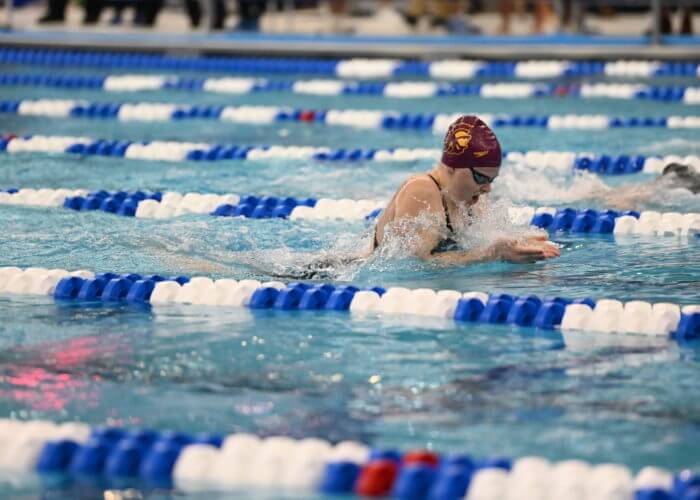
Kaitlyn Dobler. Photo Courtesy: NCAA Media
“I feel like, especially talking to people from California, it is definitely less of a big deal,” Dobler said. “The swimming community is small in Oregon and I actually liked that atmosphere. I know pretty much everyone my age who swims in Oregon. It was nice because we stayed in the Pacific northwest – sectionals was at Mt. Hood (Oregon) and for short course it would be in Federal Way (Washington). It was more relaxed in Washington and Oregon but it was also a lot of fun. California meets were usually a lot more competitive, which I enjoyed as well but it was a nice atmosphere (in Oregon).
“For my senior year, I was the only club swimmer on my high school team,” Dobler said. “Some of the private schools had more club swimmers, but it wasn’t something we took that seriously. My club team would sort of taper for it but we didn’t practice with the high school team at all, so it was more like another club meet, whereas on the east coast I know it gets really competitive with schools. The team scores at the end of high school state, it is nice for the team that wins but it isn’t like do or die for the other teams.”
For Lydia Jacoby specifically, swimming in Alaska is a very intimate affair. With not many opportunities post high school, nor a history of consistent national representation, swimming can be viewed more in a non-competitive light, and it often is a dropped activity when pursuing out of the pool endeavors for college.
“We have a lot of sectional level athletes and some futures, junior nats people (in Alaska) – those are the top. Some people that go DI are at smaller schools and a lot go to DII schools. A lot keep swimming through DIII or with club teams. It depends on the person. I wouldn’t say most people do it but it is cool to see how many people stick with it.
“(My club team has) one person who I believe is qualified for sectionals in one event. There’s not really a group for me to train with. The majority of my club is little kids.”
Even without the advantage of a Division I in-state program or many 50-meter pools in the state, Callan, Dobler and Jacoby have all seen success in the sport of swimming.
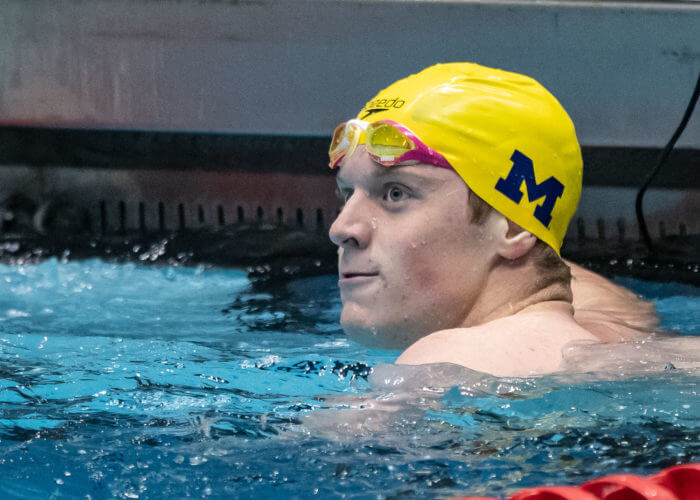
Patrick Callan. Photo Courtesy: Peter H. Bick
Callan made the 2017 World Juniors team and has the third fastest time in the nation this year in the 200 free. Dobler is the national high school record holder in the 100 breaststroke and was NCAA runnerup in that event for the University of Southern California this year. Jacoby was the 2019 junior national champion in the 100 breast and has the second fastest time of any American this year in that event, even with only one 50m pool in the state.
“They change it to long course once a year but with COVID they haven’t. It is in Anchorage, which is about two hours from my house in Seward. Our pool in Seward didn’t open up until late August so my family moved to Anchorage. We had a house up here, and I trained here for the most of the summer.
“I never really practiced long course which I think is an advantage and disadvantage. It’s always been that way so I don’t think about it much, which I think helps me. I haven’t had the opportunity to do it normally so when I don’t have it, I’m not like ‘oh no!'”
For each of them, representing their state at the national level is a sense of pride they carry everywhere they go. And seeing other swimmers from their states achieve great things in the sport is another source of inspiration.
“I remember watching (national high school record holder Aiden Hayes) at a meet and he dropped something absurd at 13-years-old and I was looking over at Titus (Knight), my coach, and was like, ‘who is this kid?'” Callan said. “I knew then he was going to be something special and here he is going to NC State and I’m really excited for him. It’s definitely really cool to see more and more people out of Oklahoma. It seems like every year, there’s a couple people that are really good and it’s awesome. To see more people get in to D1 swimming is incredible.”
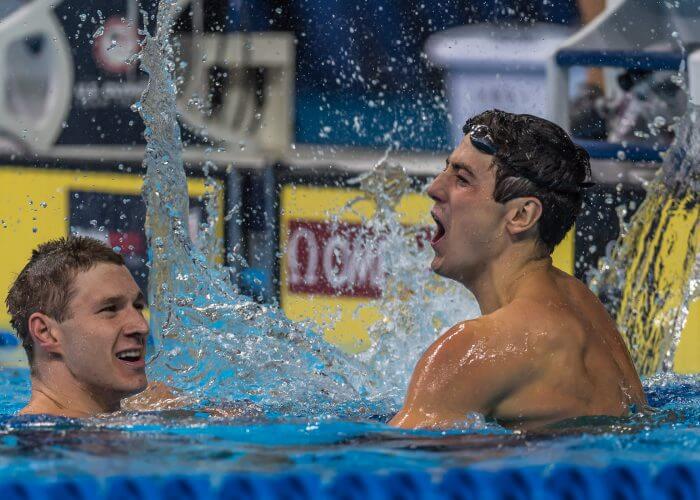
Oregon native and 2016 Olympian Jacob Pebley. Photo Courtesy: Peter H. Bick
“Jacob Pebley was a huge inspiration for my generation in Oregon swimming, and I hope to make even just a fraction of the impact he had on the next generation of Oregon swimmers.” Dobler said. “He is Oregon’s bragging right. I remember watching him swim. It was nice to have a role model saying ‘you can get there!'”
The Toll Swimming Has Taken
But of course, even with past successes in these states, swimming has still taken a big hit. In 2019, Oregon State cut its women’s team, leaving the state without an in-state Division I program. The University of Washington, originally Jacoby’s dream school, discontinued swimming in 2009. Earlier this season, Boise State also cut its women’s team, leaving the Pacific northwest, including Alaska, without another successful mid-major program in the area.
“Alaska swimming, just because we are so small and don’t have as many people, we don’t generate many D-I swimmers so I don’t think (Boise State cutting swimming) affected the swimming state as a whole but it is really sad when you see programs like that get cut because you know how much it affects the athletes,” Jacoby said.
“For the swimmers that were already going to Oregon State, it was really hard for them,” Dobler said. “A couple of them had been on my team before and that was hard for them to figure out how to transfer. I know people on other teams that were there so it was difficult.”
Division II Oklahoma Baptist also cut its swim team in 2020, while the state of Oklahoma also closed down a 50m pool in Oklahoma City in 2015 due to the city being unwilling to fund a $6 million renovation project.

Patrick Callan representing the United States at the 2017 World Juniors. Photo Courtesy: Peter H. Bick
“It was definitely really sad to see that,” Callan said. “They were the only program in the entire state at any level if I remember right. It was disappointing to see them being cut because now there won’t be any college program in the entire state.
“I see it as a cycle,” Callan said. “People don’t see swimming as a very big thing so they get rid of these facilities or don’t fund it whatsoever and then it’s ‘how is it supposed to be a big thing if you don’t have the facilities or the funding?’ It’s at a point where a lot is going to have to be invested into it to build swimming into a bigger deal like Indiana or Texas. There has to be that base for that to work out and Oklahoma doesn’t have that. I know they are working on trying to get a 50m pool in Norman which would be incredible because that would be one step closer to getting a college program there.”
With success coming from states with no Division I programs, perhaps it can strike a change in how swimming is viewed in states like Alaska, Oklahoma and Oregon.
“Making a national team was originally unheard of and now me and Aiden doing that, a lot of people are thinking they can do that too,” Callan said. “That’s incredible seeing that from a small swimming state. You want to see more and more people do that. I know in my club team, people are getting a lot better really quickly. A lot of the younger kids are getting really good and that’s good to see because it’s really rare, especially when I was there. There wasn’t a whole lot of people that were really good when I was in high school and it seems there are more and more people getting up to that level. I think some of the expectations and goals for people have shifted.”



